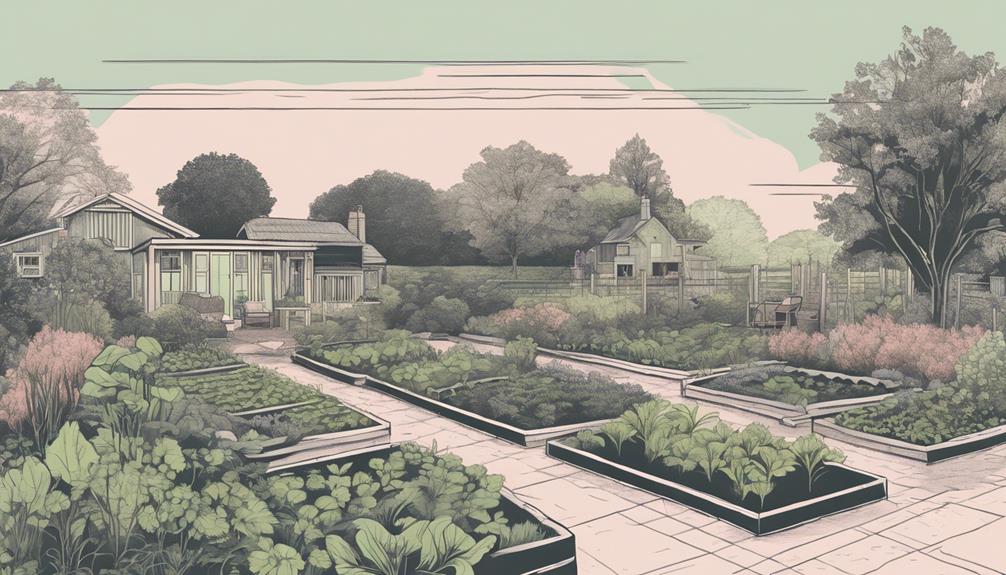How To Become More Self-Sufficient Without Starting a Full-Blown Farm…
Want to start preserving your harvest, making your own soap, or building a backyard root cellar — but not sure where to begin? “Homesteading Advice” gives you instant lifetime access to 35+ practical homesteading books on food preservation, veggie gardening, DIY natural cleaning products (save over $250 per year with this skill alone), brewing, off-grid energy, and a whole lot more…
Click Here To Check It Out Now!
“I’ve recently started planning a backyard farm in Seattle, Washington, and I’m wondering how the drainage of my yard affects where I should place my garden beds and small greenhouse. I’ve heard that poor drainage can cause a lot of issues, but I’m not exactly sure what to look for or how to address it.” Thanks, Linda, Seattle, USA.
How Does Drainage Affect Site Selection?
Drainage is a key factor to consider when selecting a site for your backyard farm, Linda. Proper drainage ensures that water does not accumulate and damage your crops or structures. It’s crucial for maintaining healthy soil and preventing various issues that can compromise your garden’s success. Let’s go over why drainage is so important and what to look out for.
The Importance of Proper Drainage
Water management is fundamental to gardening. Soil that retains too much water can lead to a myriad of problems, including:
- Root Rot: Waterlogged soil deprives roots of oxygen, leading to rot and plant death.
- Pests and Diseases: Excess moisture creates an ideal environment for pests and fungal diseases.
- Soil Erosion: Poor drainage can exacerbate soil erosion, washing away nutrients and destabilizing plants.
- Difficulty in Working Soil: Waterlogged soil can be hard to till and plant in, making garden work much more labor-intensive.
Assessing Drainage in Your Yard
Before setting up your garden beds or greenhouse, you’ll need to evaluate the drainage characteristics of your soil. Here are some methods to assess it effectively:
Visual Inspection
After a heavy rain, take a walk around your yard. Notice any areas where water lingers. Puddles that persist for more than a few hours are indicators of poor drainage.
Soil Percolation Test
A simple test involves digging a hole about 12 inches deep and filling it with water. If the water doesn’t drain within 24 hours, the soil has poor drainage. Repeat this test in multiple spots to get a clear picture of your yard’s drainage.
How to Improve Drainage
Once you identify areas with drainage issues, there are several ways to improve them:
Amending the Soil
Add organic matter like compost, aged manure, or leaf mold. This improves soil structure, enhances water infiltration, and increases its nutrient-holding capacity.
Installing Drainage Systems
- French Drains: These are trenches filled with gravel and a perforated pipe that redirects water away from problematic areas.
- Raised Beds: Elevating your plants prevents water from pooling around their roots. Raised beds filled with well-draining soil can offer better growing conditions.
Redirecting Downspouts
Make sure your gutters and downspouts are directing water away from your garden areas. This can help prevent water from collecting around your plants.
Choosing the Right Plants
Select plants that are well-suited to the moisture levels of their intended locations:
- Water-loving Plants: If you have areas that remain damp, consider planting water-tolerant species such as cattails, sedges, or marsh marigolds.
- Drought-resistant Plants: For areas with better drainage, opt for herbs like rosemary and sage, or vegetables like tomatoes and peppers.
Optimal Site Selection
When choosing a spot for your garden beds or greenhouse, prioritize areas with the best natural drainage:
- Topography: Slightly elevated or sloping areas facilitate natural runoff, preventing water from pooling.
- Soil Type: Sandy or loamy soils typically offer better drainage compared to clay-heavy soils.
Maintaining Proper Drainage
Even after setting up your garden, ongoing maintenance is essential to ensure good drainage:
- Regularly check and clean your drainage systems to prevent blockages.
- Maintain a proper mulch layer to help regulate soil moisture.
- Adjust your irrigation practices based on the season and weather conditions to avoid overwatering.
Examples in Action
Imagine you have a sloped backyard like Linda in Seattle. The higher ground naturally helps water flow away, so placing garden beds or a greenhouse there can be advantageous. If an area at the bottom of the slope tends to stay wet, that spot could be better suited for moisture-loving plants or a rain garden.
Final Thoughts…
Linda, understanding and managing drainage in your backyard farm is fundamental to achieving a thriving garden. Proper drainage affects the health of your plants, the stability of your soil, and the overall success of your garden. By assessing, improving, and maintaining drainage, you’re setting the stage for a vibrant and productive backyard farm. Best of luck with your gardening adventure, and may your endeavors flourish beautifully!

